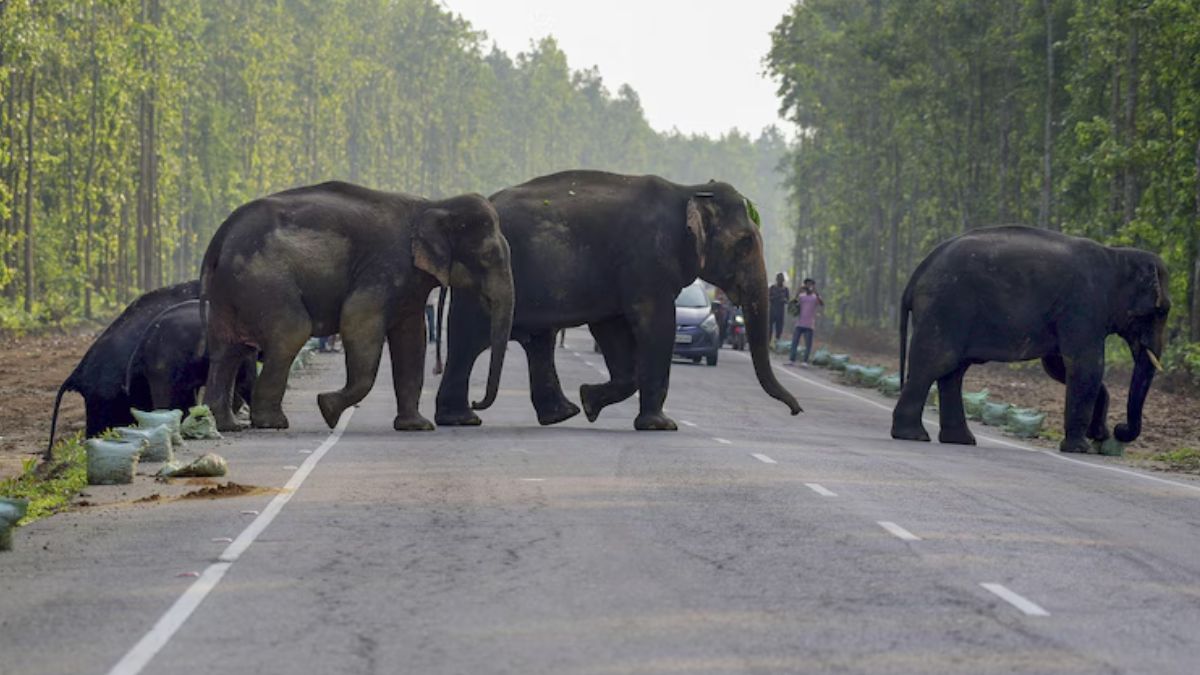In a heartbreaking development, the death toll of elephants at Bandhavgarh National Park in Madhya Pradesh has tragically risen to seven, with three additional elephants discovered dead on Wednesday morning.
Officials reported, as quoted by the Hindustan Times, that two other tuskers are currently in critical condition.
The alarming series of elephant fatalities over the past two days has raised significant concern among authorities after which Forest Minister Ramniwas Rawat ordered a probe to uncover the all circumstances surrounding the deaths of the jumbos.
What has transpired? What could be behind the elephant deaths at Bandhavgarh National Park? Here’s what we know so far.
About Bandhavgarh National Park
Bandhavgarh National Park, one of India’s most renowned national parks, is situated in the Vindhya Hills of the Umaria district in Madhya Pradesh.
Established as a national park in 1968, Bandhavgarh covers an area of 105 square kilometres and is famous for its rich population of Royal Bengal Tigers.
For many years, the sanctuary lacked a resident population of elephants, but that changed dramatically in 2018 when the first herd—consisting of around 15 to 20 elephants—was spotted within the tiger landscape.
“There were no elephants in these forests for over 100 years,” Anshuman Shah, Head Naturalist at Samode Safari Lodge in Bandhavgarh Tiger Sanctuary, told The Hindu. “Initially, it looked like a part of elephant movement along the tiger corridor, but the herd is back and is living here now,” Shah added.
Pushpendra Dwivedi, a journalist-turned-wildlife field expert, explained to the newspaper that the elephants migrated to the park from the neighbouring state of Chhattisgarh and have since decided to stay in core and buffer areas of the forest.
Currently, there are approximately 60 elephants residing in the reserve.
Also read: Who is Parbati Baruah, India’s first woman elephant mahout and Padma Shri winner?
7 elephant deaths in 2 days
During a routine patrol on Tuesday afternoon, forest officials at Bandhavgarh National Park discovered two wild tuskers lying lifeless on the ground.
Shortly afterward, the count rose to four elephants—three females and one male—according to Chief Wildlife Warden Vijay N. Ambade, as reported by The Hindu.
“The staff… discovered two wild elephants dead in Reserved Forest (RF) 384 and two more in Protected Forest (PF) 183 A, located in the Salakhaniya Beat of Khitauli and Pataur core ranges, respectively,” said Chief Warden Ambade.
Following this, forest guards launched a combing operation, uncovering another five elephants in poor health.
All nine elephants—four dead and five ill—are believed to be from the same herd of 13. Currently, seven jumbos have succumbed while 2 remain in critical condition.
Veterinarians from Sanjay Dubri Tiger Reserve, along with a team from the School of Wildlife Forensic and Health in Jabalpur, were promptly deployed to the site and are working to treat the ailing tuskers.
Prakash Verma, deputy director of the reserve told Hindustan Times, “A team of eight doctors is conducting postmortem of the elephants. After this, they will be buried. For this, 300 sacks of salt have been ordered. Pits are being dug with the help of two JCBs.”
Late on Tuesday night, Forest Minister Ramniwas Rawat expressed his sorrow over the “extremely sad and heartbreaking” deaths of these precious elephants in the Bandhavgarh Tiger Reserve in a post on X.
बांधवगढ़ टाइगर रिजर्व में चार अनमोल हाथियों की असमय मृत्यु अत्यंत दुखद और हृदय विदारक है। इन अद्भुत प्राणियों का जाना हमारे पर्यावरण और वन्यजीवन के संतुलन पर गहरा आघात है। इस कठिन समय में हमारी संवेदनाएं इन निर्दोष जीवों के प्रति हैं, जिन्होंने प्रकृति की रक्षा में अनगिनत योगदान…
— Ramniwas Rawat (@rawat_ramniwas) October 29, 2024
In light of the severity of the situation, Rawat announced that a Special Investigative Team has been immediately constituted, and have been asked to take strict action against the culprits.
Also read: World Elephant Day: How railway tracks have become graveyards for jumbos in India
What caused the deaths?
As for the cause of the deaths, activist Ajay Dubey told The Print that he had received information suggesting the elephants may have eaten something outside the forest before collapsing upon returning to the forest area.
“It is believed that perhaps these elephants died after consuming pesticide-infected crops, but there needs to be a magisterial inquiry to ascertain the true cause. It is unlikely that any farmer in Umaria district will have pesticides in such high quantities that would be sufficient to poison nine elephants,” Dubey told the news outlet.
Chief Wildlife Warden Ambade reported that Specialised Tiger Strike Force (STSF) teams from Jabalpur and Bhopal are currently investigating the incident. According to the Hindustan Times, the teams are examining a five-kilometre radius, including nearby fields, ponds, and water bodies, in search of clues.
With input from agencies


)

)
)
)
)
)
)
)
)



